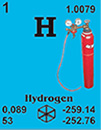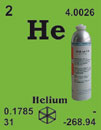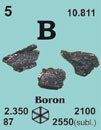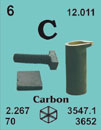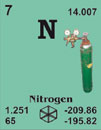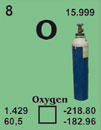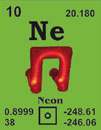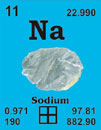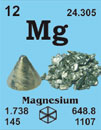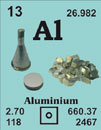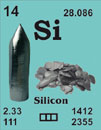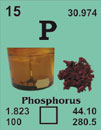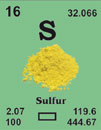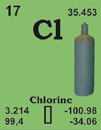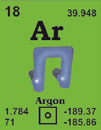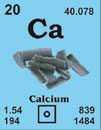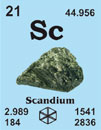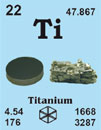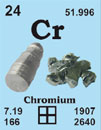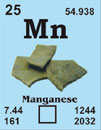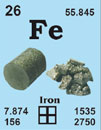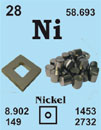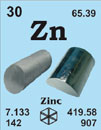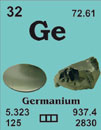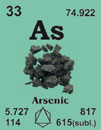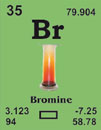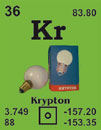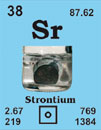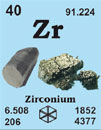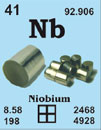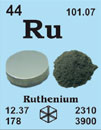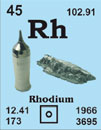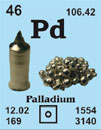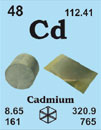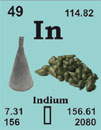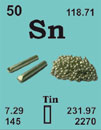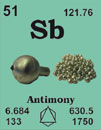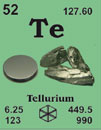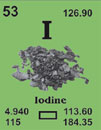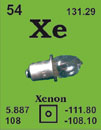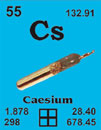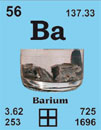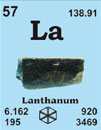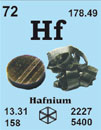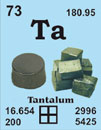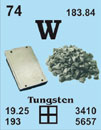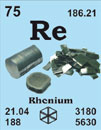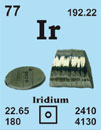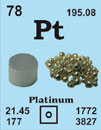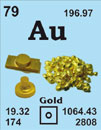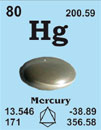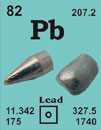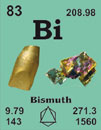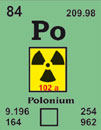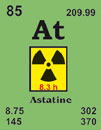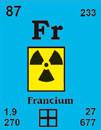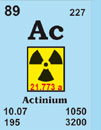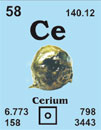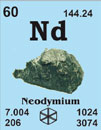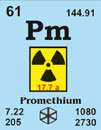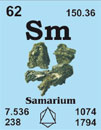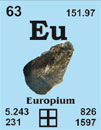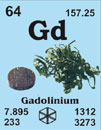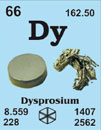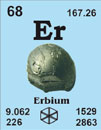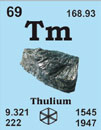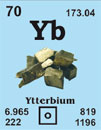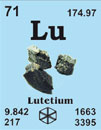Material, Technologie
& Kristalle GmbH
& Kristalle GmbH
Ihre Verbindung zu uns

-
 English
English
-
 Deutsch
Deutsch
Warenkorb
0
Artikel
Artikel
Keine Artikel
0,00 €
Gesamt
Gesamt zzgl. MwSt.
Artikel wurde in den Korb gelegt
Menge
Sie haben 0 Artikel in Ihrem Warenkorb.
Es gibt 1 Artikel in Ihrem Warenkorb.
Versandkosten (o. MwSt.)
noch festzulegen
Gesamt
(o. MwSt.)
Dysprosium (Dy)
Wir sind führender Hersteller und Lieferant von Forschungsmaterialien
Dysprosium single crystal 66Dy162.50
1886 von Paul-Emile Lecoq de Boisbaudran in Paris, Frankreich, entdeckt.
[Greek: dysprositos = mühsam erhältlich]
French: dysprosium
German: dysprosium
Italian: disprosio
Spanish: disprosio
Beschreibung: Reaktives, hartes, silberglänzendes Metall aus der Gruppe der Lanthanoide. Wird von Sauerstoff oxidiert, reagiert schnell mit Wasser, löst sich in Säuren. Verwendet in Legierungen für magnetische Werstoffe.
Dysprosium single crystal properties
| State: | Single crystal |
|---|---|
| Crystal structure: | hexagonal |
| Production method: | Floating zone |
| Standard size: | diameter 7-8mm thickness 1mm |
| Orientation: | (0001) |
| Orientation accuracy: | <2°, <1°, <0.4° or <0.1° |
| Polishing: | as cut, one or two sides polished |
| Roughness of surface: | <0.03 µm |
| Purity: | 99.99% |
Further Materials properties
| Crystal structure: | (cell dimensions/pm), space group, Orthorombic (a=359.5, b=618.3, c=567.7), Cmcm h.c.p. (a=359.03, c=564.75), P63/mmc b.c.c. (a=398), Im3m T(orthorhombic -> h.c.p.) = 86 K high pressure form: (a=334, c=245), R3m |
|---|---|
| X-ray diffractions mass absorption coefficients: | CuKa 286 (µ/r) / cm2g-1 MoKa 70.6 (µ/r) / cm2g-1 |
| Neutron scattering length: | 1.69 b/10-12 cm |
| Thermal neutron capture cross-section: | 920 sa / barns |
| Density: | 8.54 kg/m-3 [293 K]; 2390 [liquid at m.p.] |
| Melting point: | 1411.85 °C / 1685 °K |
| Boiling point: | 2561.85 °C / 2835 °K |
| Molar volume: | 19.00 cm3 |
| Thermal conductivity: | 10.7 [300 K] Wm-1K-1 |
| Coefficient of linear thermal expansion: | 10.0 x 10-6 K-1 |
| Electrical resistivity: | 57.0x10-8 [293 K] Wm |
| Mass magnetic susceptibility: | +8.00 x 10-6(s) kg-1m3 |
| Young's modulus: | 61.4 GPa |
| Rigidity modulus: | 24.7 GPa |
| Bulk modulus: | 40.5 GPa |
| Poisson's ratio: | 0.247 GPa |
| Radi: | Dy3+ 91; atomic 177; covalent 159 |
| Electronegativity: | 1.22 (Pauling); 1.10 (Allred); n.a. (absolute) |
| Effective nuclear charge: | 2.85 (Slater); 8.34 (Clementi); 11.49 (Froese-Fischer) |
| Number of Isotopes (incl. nuclear isomers): | 24 |
| Isotope mass range: | 147 -> 168 |
Biological data
| Biological role: | none |
|---|---|
| Toxicity | low |
| Toxic intake: | n.a. |
| Lethal intake: | LD50 (Chloride, oral, mouse)=7650 mg kg-1 |
| Hazards: | Dysprosium is midly toxic by ingestion. |
| Level in humans | |
| Blood: | 0.39 mg dm-3 |
| Organs: | n.a. but low |
| Daily dietary intake: | n.a. |
| Total mass of element in average [70 kg] person: |
n.a. |
Geological data
| Minerals: | Many minerals are known, and aluminium is present in many other minerals | |||
|---|---|---|---|---|
| Mineral | Formula | Density | Hardness | Crystal apperance |
| Bastnäsite | (Ce, La etc.) Co3F | 4.9 | 4 - 4.5 | hex., vit./greasy yellow |
| Monazite | (Ce, La, Nd, Th etc.) PO4 | 5.20 | 5 - 5.5 | mon., waxy/vit., yellow-brown |
| Chief ore: | monazite, bastnäsite |
|---|---|
| World production: | c. 100 tonnes/year |
| Main mining areas: | USA, Brazil, India, Sri Lanka, Australia |
| Reserves: | 1.5 x 105 tonnes |
| Specimen: | available as chips, foil, ingots or powder. Safe. |
| Abundances | |
|---|---|
| Sun: | 11.5 x 106 (relative to H = 1 x 1012) |
| Earth's crust: | 6 ppm |
| Seawater: | |
| Atlantic surface: | 8 x 10-7 ppm |
| Atlantic deep: | 9.6 x 10-7 ppm |
| Pacific surface: | n.a. |
| Pacific deep: | n.a. |
| Residence time: | 300 years |
| Classification: | recycled |
| Oxidation state: | III |
Other sizes and specifications on request
Übersicht der Elemente mit Zugang zu unserem Shop
Tel.: +49 (0) 2461 - 9352 - 0
Fax: +49 (0) 2461 - 9352 - 11
Fax: +49 (0) 2461 - 9352 - 11

